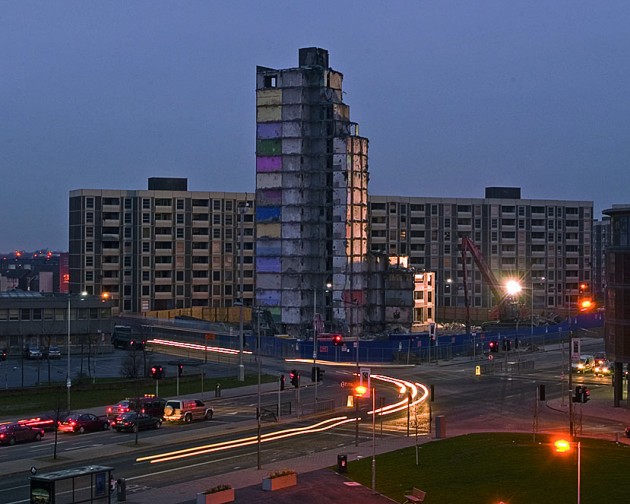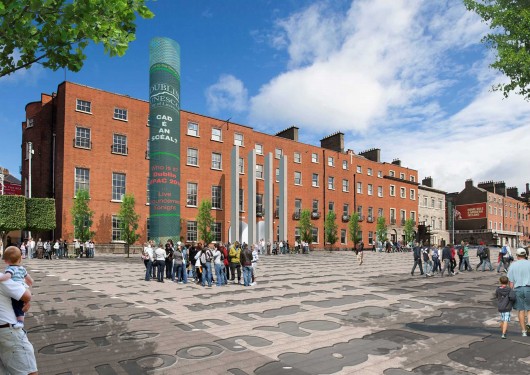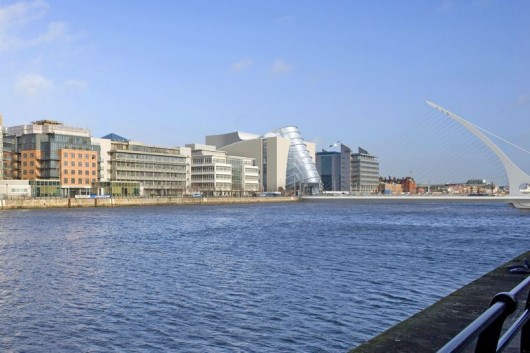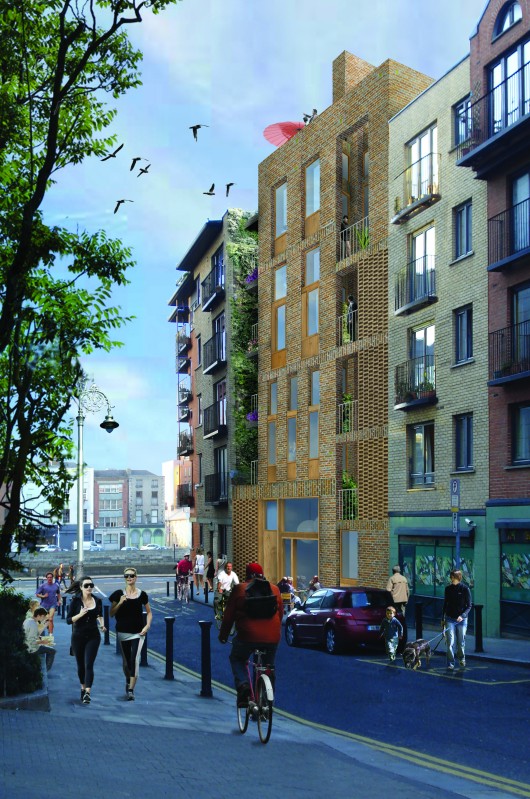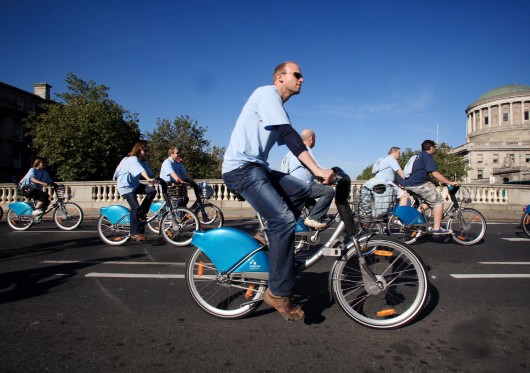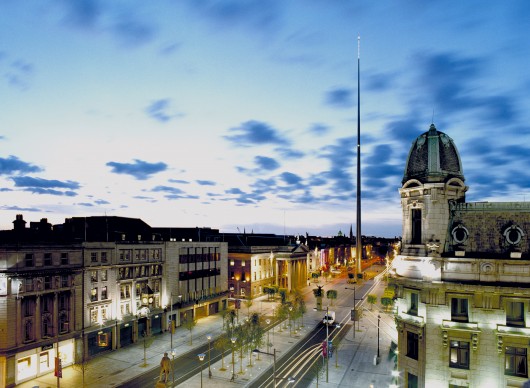Dublin City Council through City Architects has been building links with Singapore, a city that applies a strong design focus in urban development. City Architect Ali Grehan was invited to Singapore recently to see the impressive work being done by the Urban Redevelopment Authority and share insights about Dublin’s design approach. In addition to making a presentation to the Centre for Liveable Cities Ali did an interview for the URA’s publication Skyline, an edited version of which is published today and can be found here.
The full Q&A is below.
What is good design to you and what does that mean for cities?
Good design works for people, bad design works for itself – this is the most direct statement I can make about design. The distinction affects everything, but is manifested most intensively in cities, where there is a high degree of interdependency between people.
The design of cities is about our approach to place making; our governance systems and strategies. Design in cities is about how this approach is manifested in the quality of the built environment.
Cities hold the key to solving problems of our age – climate change, peak oil, inequitable distribution of resources. Managing urban growth is the development issue of our age. We need to see urbanisation as an opportunity, not a threat. We will all benefit – urban and rural communities – if we manage this growth by design. Ultimately, design connects cities and connected cities are more humane, attractive and competitive.
What does a great liveable and memorable city look like to you?
A great city for me is one that achieves excellence in the ordinary. Most places and buildings must work quietly and collectively as a backdrop or foil, providing a setting for those buildings that have legitimate call to be distinctive. My iconic and memorable city experiences are usually drawn from the routine. I think this is true for many people; we are rethinking the meaning of ‘iconic’ in place making.
Share with us some of the interesting projects you are working on right now.
Dublin is emerging very successfully from the economic crisis and development is happening again. The projects we are working on now were devised during the downturn, when we had to pause and look for new ways of funding and delivering critical infrastructure.
One such project is the Parnell Square Cultural Quarter, which is being philanthropically funded by US Real Estate Investors Kennedy Wilson. Parnell Square is the oldest and finest of Dublin’s Georgian Squares, dating from 1757 and is the northern tip of what we call Dublin’s historic Civic Spine. The area around Parnell Square is also one of the most densely populated and culturally diverse parts of the city; however, it has fallen into decline and dereliction over recent decades. This intervention captures Parnell Square’s potential to be a catalyst for renewal within the historic city centre. The project is at detail design and consultation stage and has been embraced by the government as a flagship project to mark the centenary of Ireland’s independence.
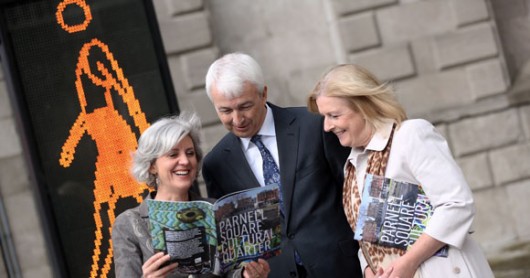
Parnell Square Cultural Quarter project launch (l to r) Dublin City Architect Ali Grehan, Kennedy Wilson Europe director Peter Collins, and Dublin City Librarian Margaret Hayes.
A larger project which is enormously significant for the city is the development of Dublin’s Docklands. Development here had stalled in 2008 but has been re-invigorated through the new Docklands Strategic Development Zone (SDZ) Planning scheme launched in May 2014. The SDZ covers an area of 22 hectares and provides for 2,600 new homes and 366,000 square metres of commercial space. It has already facilitated the fast tracking of development proposals – currently at the design stage – in excess of one billion euro in value.
What are some of the crucial ingredients we need for creating people-friendly cities?
People-friendly cities are clear, generous, appropriately scaled, positive to context and well made. This statement describes place making criteria I devised for Dublin City Council’s Development Plan. An important criterion that we are anxious to promote is ‘generosity’; particularly generosity in the design of functional requirements thereby creating opportunities for enjoyment in use.
People-friendly cities are also inclusive places. Inclusivity and Universal Design principles should inform how we make our urban environment. Universal Design goes far beyond issues of physical access alone. In Dublin, the inclusiveness of the built environment is now enshrined in the thinking driving policy, new development and regeneration. For example, Dublin is the first capital city in the world to adopt a city-wide approach to becoming age-friendly and is implementing a five year plan to 2019 in collaboration with agencies representing the needs of older people.
Making cities diverse and people-friendly yields social and economic benefits; a city that includes everyone is more vibrant and innovative, because innovation comes from difference.
How do you balance people choosing what they want, with planning for needs?
This must be the most difficult challenge facing City representatives and managers. It is very hard to reconcile short term demands with long term planning goals. Planning has to proceed on the basis of mutual trust and respect, which only develops if everyone believes that the issue is being described truthfully.
The designer has a very important role to play here in that designers can visualise and communicate issues and possible solutions in ways that are understood by all. It is remarkable how people will accept a solution once it is developed through meaningful consultation and explained clearly. We have had many experiences where controversial issues were accepted by the local community. A recent example is a flood defence project along Dublin Bay, which was initially rejected by the community but which is now progressing well after being redesigned in collaboration with local community members.
Dublin is ranked the 9th most bike friendly city in the world. What are some of the key strategies that have worked well for the city?
Dublin’s high ranking as a Bike Friendly city is largely due to the success of the Dublin Bikes scheme. This is a free public bike rental scheme introduced by Dublin City Council in 2009. The genesis of the programme was design led in that the first stations were located close to homes and work, not tourist destinations. This meant that the bikes were immediately useful for ordinary Dubliners and quickly became embedded in the life of the city.
8 million trips have been taken to date; the scheme is so popular that it is expanding rapidly and has spawned independent apps to help people find available bikes and docking stations. We do have much more to do as a City in making the streets more cycle and pedestrian friendly but the success of the Dublin Bikes scheme has transformed people’s attitudes to cycling in Dublin.
How do we get everyone to understand and use shared spaces well? How do we develop a “successful public realm”?
Public space is the glue that holds the city together; it’s where the city and citizens meet. It can be a hotly contested space!
A rule of thumb in developing a successful public realm is an understanding that all municipal departments have a contribution to make. This isn’t usually the case; the design and management of the public realm is often seen as a singular issue, primarily to do with roads and traffic or paving and landscaping. However, the quality of the buildings edging the public realm is just as important. In order to achieve a high quality public ream we must ‘consider places before buildings’ and we must adopt an interdisciplinary approach throughout.
There is a growing culture of participation and innovation in architecture and urban design for Dublin. How do you get people involved?
Dublin City Council has a strong tradition of public consultation in developing policy and capital programmes, for example, communities are actively involved in designing Housing Regeneration projects. In recent years, the City has established participatory platforms through which we engage with people and test new ideas.
Initiatives such as PIVOT Dublin, Designing Dublin, BETA and the Studio have helped us experiment and innovate; inspired interdisciplinary collaboration across all sectors; created strong networks; offered opportunities to celebrate design impact and translated idea to action through projects.
What are some of your impressions of Singapore’s architecture and city as a whole? Any interesting insights that may be relevant to Dublin?
Singapore is green! This was my first and very favourable impression of Singapore. Extensive and innovative urban greening is a huge advantage to a city as it helps make higher density living acceptable and more attractive. This is an important lesson for Dublin and other cities. I was also very impressed with the design of apartment buildings and the high standard of building maintenance.
What are some examples of costly mistakes cities make when they ignore design? How can Singapore avoid these?
City issues are dynamic and interdependent – a factor of scale and complexity and context. Design can help us understand the complexity, find appropriate solutions and avoid costly mistakes.
Our mistakes range from badly connected transport infrastructure to inadequate management systems for the huge number of apartment complexes built in the last few decades. These mistakes have one thing in common; they are borne out of decisions taken in isolation and for a single purpose. The fundamental value of design is that it is collaborative, holistic and based on evidence and understanding. You could say it is simply ‘joined-up’ thinking, much sought after but often absent.

